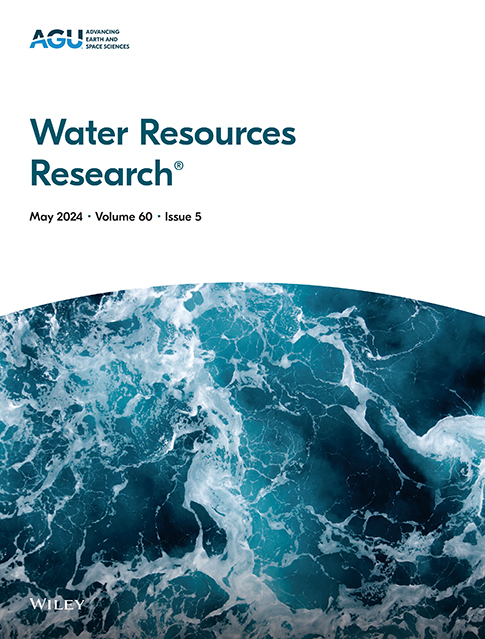满足农业生产和水质目标的土壤磷指标的可达性
IF 4.6
1区 地球科学
Q2 ENVIRONMENTAL SCIENCES
引用次数: 0
摘要
磷肥在显著提高农业生产力的同时也使水质退化。流域模拟模型在制定磷管理响应方面发挥了广泛的作用。然而,基于模拟的研究依赖于预先设计的分水岭情景(例如,初始条件和管理行动),并且对可能仅从未见情景中出现的结果视而不见。与此同时,恢复水质的努力经常失败。与基于模拟的方法相比,我们在这里实现了最优控制和可达性方法,描述了任何初始条件和施肥策略下的流域磷轨迹。代价是这些新方法需要简化系统的动力学。对于双池磷模型,我们定义了一个双重管理目标,其中(a)植物有效磷满足作物需求,但(b)总磷损失满足水质目标。根据这个目标,我们计算向后可达集合,这些集合表示从所有初始条件到达目标所需的最小时间。以美国玉米带典型流域为例,我们发现至少需要42年才能达到农业和水质的联合目标。我们发现,最优(时间最小化)施肥量策略在过渡时期驱动了一个迂回的轨迹,使土壤磷违背作物需求阈值的目标。然而,我们发现,即使是很小的短期农业牺牲,也能深刻地加速实现农业生产力和水质的长期联合目标。这些结果和方法补充了传统的基于模拟的研究,为流域管理者提供了更丰富的不确定性特征和管理选择。本文章由计算机程序翻译,如有差异,请以英文原文为准。
Reachability of a Soil Phosphorus Target That Satisfies Agricultural Production and Water Quality Goals
Phosphorus fertilization has supported remarkable improvements in agricultural productivity but also degraded water quality. Watershed simulation models have been broadly instrumental to crafting phosphorus management responses. However, simulation-based studies rely on predesigned watershed scenarios (e.g., initial conditions and management actions) and are blind to outcomes that might only emerge from unseen scenarios. Meanwhile, efforts to restore water quality have routinely failed. In contrast to simulation-based methods, here we implement optimal control and reachability methods that describe watershed phosphorus trajectories for any initial condition and fertilizer strategy. The trade-off is that these new methods require simplification of the system's dynamics. For a two-pool phosphorus model, we define a dual management target where (a) plant-available phosphorus satisfies crop demand but (b) total phosphorus losses meet water quality goals. From this target, we compute backwards-reachable sets that indicate the minimum time in which the target can be reached from all initial conditions. For a typical watershed in the U.S. corn belt, we find that it will take at least 42 years to reach the joint agricultural and water quality target. We show that the optimal (time-minimizing) fertilizer rate strategy drives a roundabout trajectory toward the target where soil phosphorus violates the crop demand threshold during the interim time. However, we find that even small, short-term agricultural sacrifices can profoundly hasten progress toward the long-term, joint target of agricultural productivity and water quality. These results and methods complement traditional simulation-based studies and provide watershed managers with a richer characterization of uncertainty and management options.
求助全文
通过发布文献求助,成功后即可免费获取论文全文。
去求助
来源期刊

Water Resources Research
环境科学-湖沼学
CiteScore
8.80
自引率
13.00%
发文量
599
审稿时长
3.5 months
期刊介绍:
Water Resources Research (WRR) is an interdisciplinary journal that focuses on hydrology and water resources. It publishes original research in the natural and social sciences of water. It emphasizes the role of water in the Earth system, including physical, chemical, biological, and ecological processes in water resources research and management, including social, policy, and public health implications. It encompasses observational, experimental, theoretical, analytical, numerical, and data-driven approaches that advance the science of water and its management. Submissions are evaluated for their novelty, accuracy, significance, and broader implications of the findings.
 求助内容:
求助内容: 应助结果提醒方式:
应助结果提醒方式:


